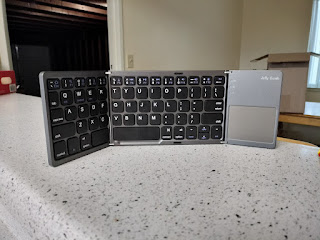FOSSifying my home | Project One: Media Center (Part One: Computer)
As far as the computer itself goes, I had originally planned to use a Linux distro specifically made for media centers or smart TVs. Over time, though (because the idea for this project came up way before I ever posted about it and it took me a long time to get started), I realized that many Linux distros are so damn customizable, it doesn't matter all that much which one I start out with. So I installed Linux Mint because I already have it on a flash drive and I already have experience with it.
The other two laptops I've installed Mint on were generally pretty fast before they broke (at least fast enough for my standards--a middle class tech bro might disagree), and their main problem before replacing the OS was inconsistent ability to run. Both had frequent blue screens, and one would take forever for the screen to turn on. This laptop was different though: as far as I'm aware, it wasn't actually broken, they just stopped using it because it's so slow. When I decided to install Linux on it I thought it would fix this problem, but when I started actually installing it I was afraid it wouldn't.
Turns out the laptop hardware is worn down enough that it does make everything kinda slow even without Windows bloatware. Fortunately, it's really not all that noticeable with this particular application of it. Installing it from the live boot was hell, but once the installation was complete the result was only a little slow. Firefox took a while to load the first time, but after that it seemed fine.
As far as customization goes, I did some things differently on this computer than I did on the other old laptops. First of all, I told it to keep the base user profile unlocked. The password is still required to, for example, install packages, but anyone can turn on the TV and start watching things from the laptop without putting in a password. Another change is that I made the desktop icons as big as I could, and spaced them out a lot. It still looks kind of like a computer desktop, but it passes for a TV. I looked up how to autohide the taskbar and will do that next time I open the computer, to make its appearance even more TV-like.
The desktop is full of Firefox web apps for all the streaming platforms people in my family are paying for, as well as YouTube and Twitch (and Nebula, in the hopes that eventually my spouse and I can justify that expense). Most of these have their own official apps, but I'm sure they're full of trackers (and some are full of ads), so I chose Firefox with its innate ability to add ad-and-tracker-blockers. The "apps" still look pretty native, although I think I'm going to edit them so that they automatically full-screen. With the Web Apps' feature of finding icons from the website I gave it, I now have a menu with all the websites I want looking like smart TV apps.
As far as the background, I've set it to a slideshow that changes picture every 15 minutes. The reason I've done this is because of something my spouse said when I first brought up this project idea: as a disturbing example of the capabilities of normal smart TVs, they told me of someone who had opened their smart TV and their background or whatever had been replaced with an ad for the Barbie movie. So, as a bit, I'm going to have the background cycle through a bunch of normal backgrounds (perhaps just solid black) and one ad for the Barbie movie. Ads are a lot better when they're just an image with no trackers or links you can accidentally click on, and you can choose to view them as a joke.
One more setting I changed is to make the computer always on, even when the laptop is closed and the TV is off. I know this will use energy, and I'm open to input on how to limit the amount of energy it uses, but I hope the fact that it knows it doesn't have a display connected will prevent it from needing very much power while the TV is off. I did this because the laptop takes many minutes to turn on, so it'll save a lot of time to just turn on the TV. Unfortunately, despite me telling the settings not to lock it when it closes, it did ask me for a password the last time I opened it, so I'm hoping I can find another way around this. In the mean time, I gave it a pretty easy to remember password, and I got the Bluetooth keyboard working (as just a keyboard for now), so hopefully it won't be too much of a hassle.
The last customization I'll do to this computer is to run a media server and add the front-end to the desktop as an app. Unfortunately, now that I've seen the limited capabilities of this laptop, I've realized that it may not be able to handle running the media server and also watching things at the same time (without any lag, anyway), but I think I'm going to try it, and if it's not gonna work, I can run the media server on my desktop computer and we'll just have to wake it up to watch things from it.


Comments
Post a Comment